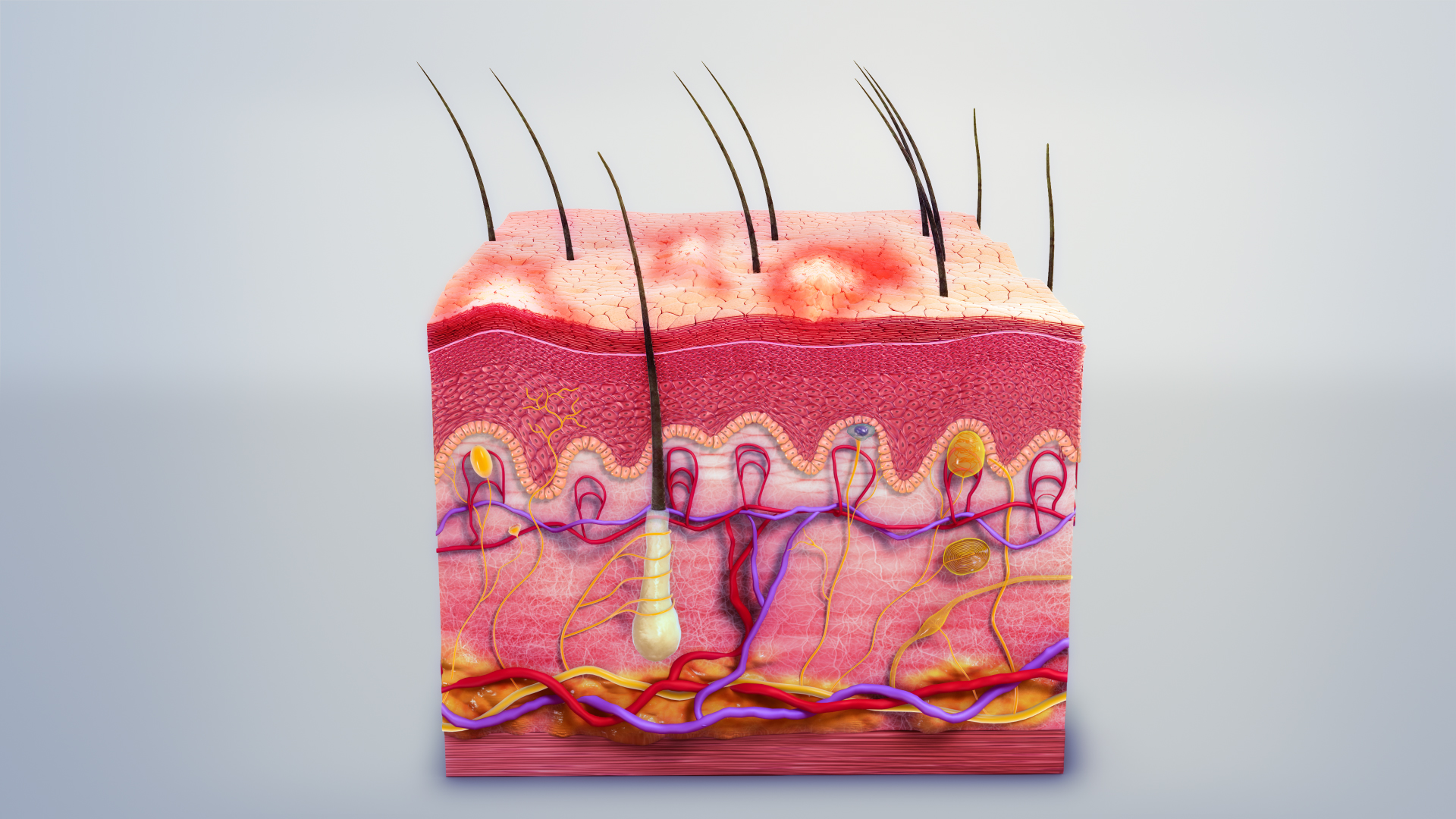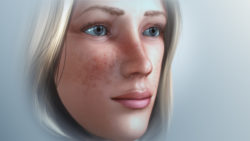Psoriasis is an autoimmune disorder which affects the skin. It is a long term inflammatory skin condition. It occurs due to rapid production of the skin cells. Usually, skin cells first form deep inside skin, slowly rise up to the surface of the skin and eventually fall off. The life cycle of a skin cell is about one month but in people who have, the production occurs in just a few days and since there isn’t enough time for the older cells to fall off, this rapid overproduction leads to the buildup of skin cells. The skin becomes red, dry, thickened and scaly. Psoriasis can affect just a small area or cover the entire body depending on the severity.

3D Medical Animation still of cross section of inflammatory Skin
Types of Psoriasis
There are five types of psoriasis. Plaque Psoriasis is the most common and accounts for 85 to 90% of the people with psoriasis. The skin develops red inflamed patches that are covered with whitish or silver scales or plaques. These plaques are mostly found on the elbows, knees and scalp. The other types of psoriasis are Guttate (drop like spots), Pustular (small pus filled blisters), Inverse (in the folds of the skin like the underarms, navel, groin and buttocks), Erythrodermic (large sections of the body at once).
Symptoms
The symptoms of it depend on the severity and the type. The most common symptoms are red inflamed patches of skin, plaques on the red patches, soreness around the patches, dry skin which is prone to cracking and bleeding, itching and burning sensations in the affected area and even painful and swollen joints. However the severity of the symptoms may not be constant. The condition may cause severe symptoms for a few days or weeks and then the symptoms might reduce and even disappear and then in a few days may come back again.
Causes
The main causes of it are genetics, abnormality in the immune system and environmental factors. Certain medications like beta blockers have also been linked to it. Various factors like emotional trauma and stress may also trigger an episode of it.
Treatment
The treatment for it involves a two pronged strategy including medication and lifestyle changes. Depending on the severity and type, symptoms can be controlled through regular treatments like applying topical medications, taking oral medications or receiving injections to reduce the discomfort that is caused by psoriasis. Phototherapy is also used to reduce the severity of the symptoms. Lifestyle changes like reducing stress, eating a healthy diet, taking care of the skin and practicing good hygiene go a long way in controlling the disease.
Like most autoimmune and genetic disorders, psoriasis cannot be cured but it can be controlled. Treatments that control the itching and discomfort combined with a healthy lifestyle help the person suffering from psoriasis to enjoy a good quality of life.
Disclaimer: The information in no way constitutes, or should be construed as medical advice. Nor is the above article an endorsement of any research findings discussed in the article an endorsement for any of the source publications.
References:

Freckles: Types, Causes, and Treatment
Freckles appear as clusters of circular, brownish-colored spots, more prominently on the faces of light-skinned people. They occur as a result of increased melanin production.Read More..









